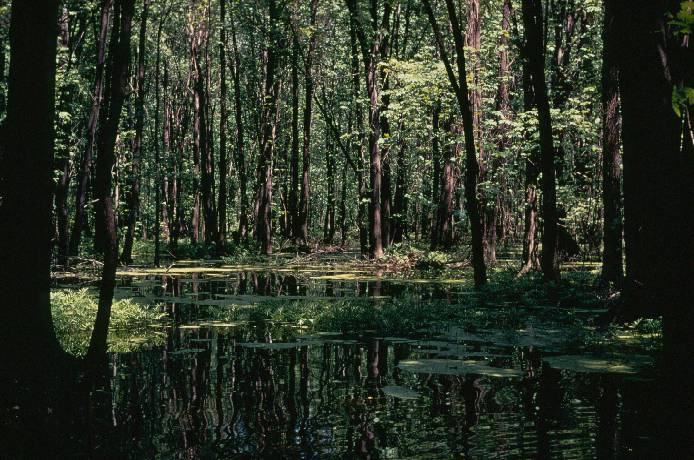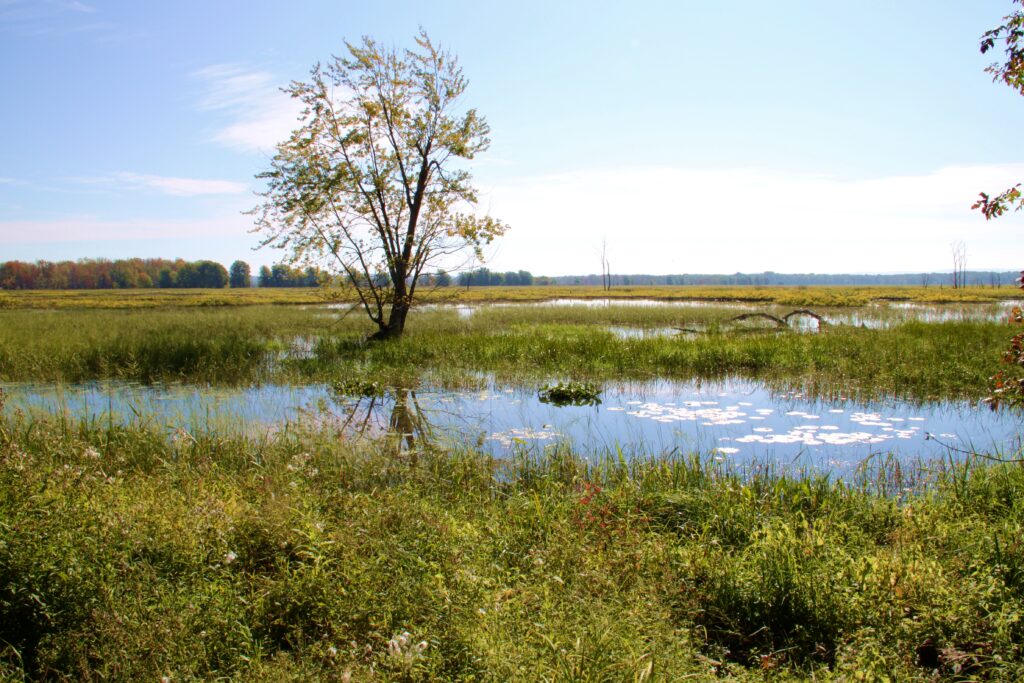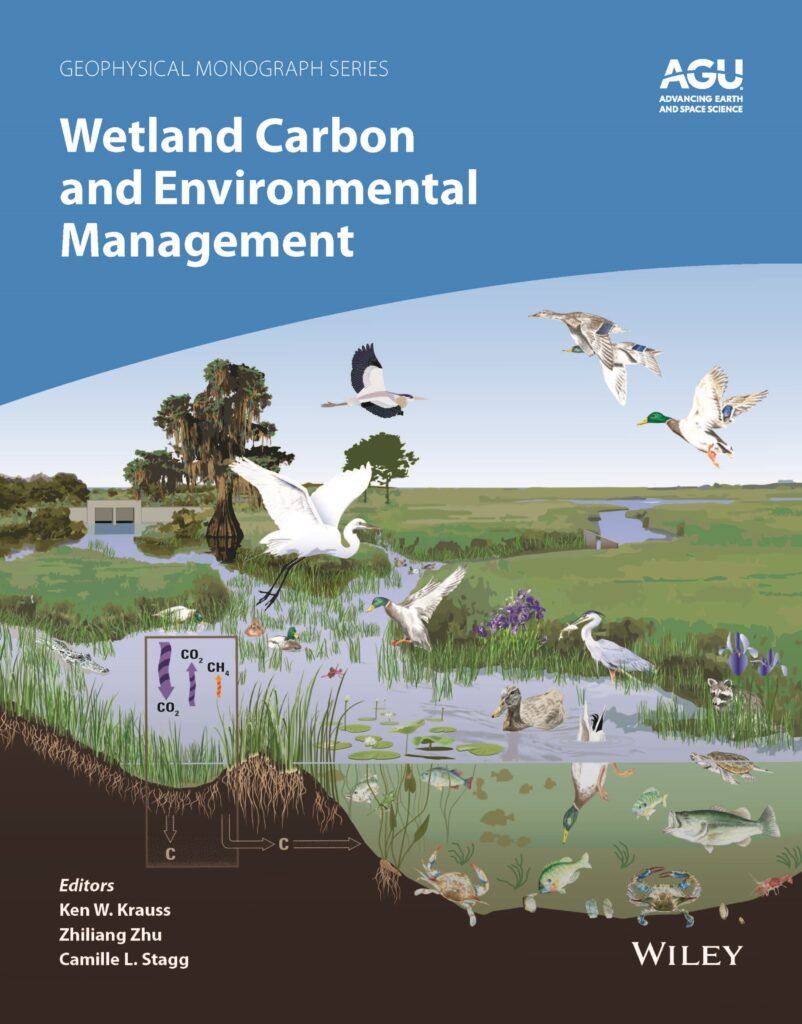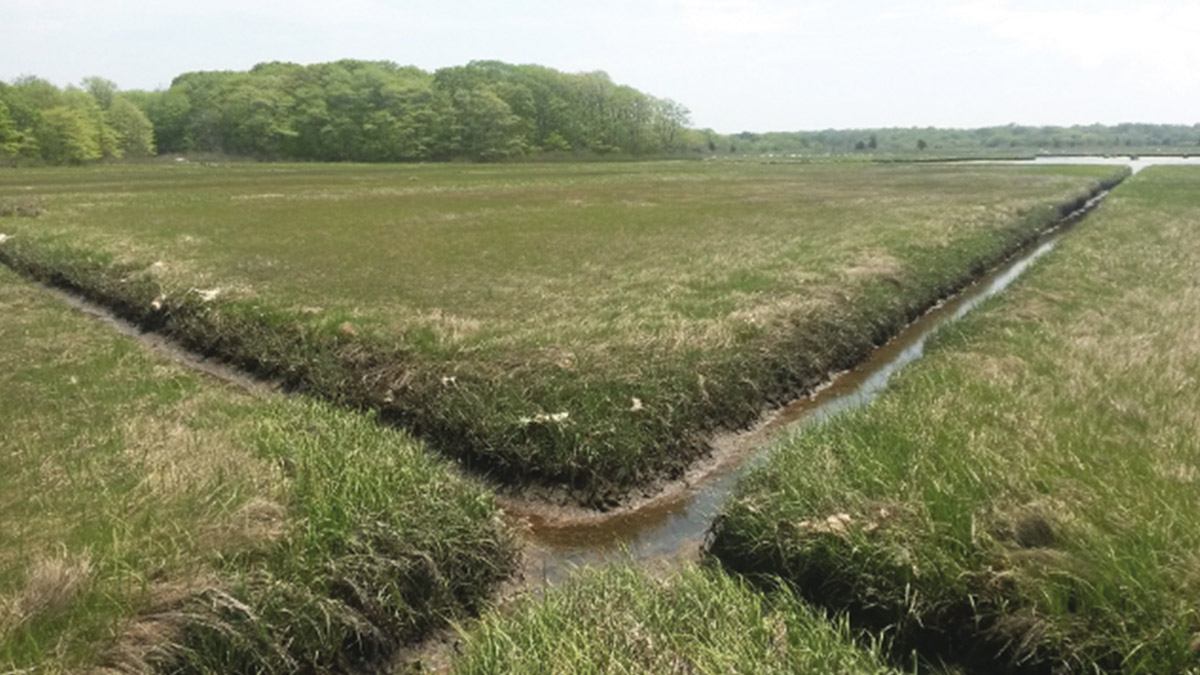Editors’ Vox is a blog from AGU’s Publications Department.
Wetlands are vital natural assets, capable of taking up atmospheric carbon and restricting subsequent carbon loss to facilitate long-term storage. They can be deliberately managed to provide a natural solution to mitigate climate change, as well as to help offset direct losses of wetlands from various land-use changes and natural drivers. A new book in AGU’s Geophysical Monograph Series, Wetland Carbon and Environmental Management, presents wetland research studies from around the world to demonstrate how environmental management can improve carbon sequestration while enhancing wetland health and function.
What is the relationship between wetlands and carbon?
Like all plants, wetland plants take up carbon from air in the form of carbon dioxide and store that carbon in plant biomass. Storage of carbon in tree biomass can occur for many years, but is often restricted to annual cycles for non-woody (herbaceous) plants. However, much of the woody and herbaceous plant carbon is also stored belowground within complex and dense roots.
Very similar to leaves or herbaceous plant biomass, roots are produced, die, and are replaced by new roots over short periods of time. In non-wetland ecosystems, roots that die often decompose quickly, because they are exposed to readily available oxygen, and during that process much of the carbon is released back to air as carbon dioxide.
However, because wetland soils are wet, oxygen is not readily available to facilitate decomposition. Roots that die decompose slowly while new roots continue to be produced, which leads to accumulation of organic matter in the soil. Carbon makes up approximately 50 percent of this organic matter.
How can wetlands be managed to improve carbon storage and prevent carbon loss?
Many wetlands have been drained to improve human utility. Drainage of wetlands has led to the release of carbon to the atmosphere as increased exposure of soils and roots to oxygen in drained wetlands facilitates respiration.
One of the more direct ways to improve carbon storage in an affected wetland is to re-flood it, or if the wetland has a pulsed flood regime (e.g., tidal wetlands), restore that natural hydrological pattern. While this approach seems technically easy to visualize, implementation can be especially complex as many wetlands were drained for a very specific societal need (e.g., housing development, flood mitigation, agriculture), which may not be easily reversed.
Restoring wetlands to their original hydrology is often very difficult but doing so provides the most effective way to facilitate carbon storage, keeping in mind that much of the carbon stored in a wetland occurs belowground. Another way is to create wetlands that were previously lost; if the hydrology is sufficient, carbon storage can be facilitated.

How can wetland management mitigate climate change?
Wetland management is just one of many necessary solutions moving forward. On a per-area basis, wetlands can reduce carbon emissions by storing carbon long-term in the soil. However, under some management regimes, carbon can also be released in the form of methane, which contributes proportionately greater than carbon dioxide to climate change. These gases must be balanced. Wetlands currently release a lot of greenhouse gases, and if we can use management to balance emissions and uptake of greenhouse gases on a large scale, that would be an important outcome that may in time help to slow the burden of increased carbon dioxide and methane on climate change.

What motivated you to write a book on this topic at this time?
The editors of this book are all scientists with the United States Geological Survey. We often conduct studies on lands managed by the Department of the Interior. Department land managers such as the U.S. Fish and Wildlife Service and National Park Service, are especially interested in using public lands to help with offsetting carbon that is being released to the atmosphere from land use change, industrial activity, and geologic sources. Carbon sequestration is often a pathway to achieving other wetland functions such as coastal wetland resilience to sea-level rise.
Because wetlands are very good places to take up and store more carbon than is lost, and the U.S. Government has millions of square miles of wetlands, we felt it was an important time to develop a road map based on multiple types of wetlands for managers to reference not only how their management actions may be used to facilitate carbon storage, but also how unintended actions may diminish carbon sequestration.
We do not provide examples of all possible wetland management protocols that might induce positive carbon sequestration, but parallels can be drawn from the case studies in this book. We were also motivated by many discussions with agency leaders, and how scientists may provide nature-based solutions to help offset society’s impact on the climate. We also intend for this book to have impact on private lands, which may be possible given the right incentives.
Can you give an example of a successful wetland management approach from around the world presented in your book?
Two examples from the book come to mind. First, wetlands are often degraded through actions that cause their hydrology to be affected (e.g., roads are built, rivers are dredged, seawalls are commissioned). Tidal wetlands the world over are positioned to lose carbon through these modifications, as greater exposure to air facilitates carbon mineralization. For one small island in southwest Florida, mangroves have been degraded through development actions to facilitate tourism and retirement living. One chapter in the book calculates that simply restoring the hydrology of the impacted mangroves around these developments will likely reverse this trend and facilitate a net uptake of carbon (versus loss) over the next multiple decades.
Another chapter demonstrates that co-managed mangrove forests and aquacultural enterprises can be synergistic in providing local food security, in this case to a local seaside Chinese community, and facilitate carbon storage while limiting methane emissions on the same environmental footprint. Management of water, sediment deposition, nutrient loading, tidal action, fire regime, and plant species composition on natural and restored wetlands provide global opportunity for facilitated carbon sequestration while maintaining or enhancing those services expected from wetlands. Many such examples are highlighted throughout the book.
What steps would you advise government actors to take to improve carbon storage through wetland management?
We think it is important to think big and implement wide-scale wetland rehabilitation actions before full degradation occurs. One of the easiest ways to facilitate carbon storage is to return degraded wetlands to their functional precursor, whether that includes strategic breaching of berms, re-routing of tidal floodwaters, converting upland environments back to functional wetlands, construction of river diversions, or similar actions, and it may be important to implement these projects within large areas. It is far cheaper to halt degradation before a wetland is changed completely than it is to create new wetlands from the landscape.
Large-area wetland restoration needs to be addressed by ambitious action. There are numerous projects than can be implemented, but there are some barriers to progress including policy, funding, and interest. Governments are positioned to think big, and industry will no doubt follow if the best science is used for facilitating carbon storage on wetland landscapes.

What are some of the unresolved questions where further research, data gathering, or modeling is needed?
First, current knowledge needs to be implemented and applied to existing wetland environments. The wetland literature is already vast, but managers may not always know how to interpret that literature. How do we learn from the literature, and the case studies in this book, and apply them elsewhere where conditions might differ slightly? This question can be answered through ambitious implementation strategies and intensive monitoring. It is unclear how this will happen at impactful scales in time.
Second, we need to develop better linkages between time horizons of restored and created wetlands and the potential for carbon sequestration by wetland type, as well as understand how we might continue or even facilitate carbon storage in wetlands with some measure of human development in overlapping areas. Development and the continued need for global food security will dominate societal action, and we must embrace that.
Third, along with carbon management, we need to find ways to use wetlands to facilitate smart water management, as water will only become increasingly limiting to human survival in the future. Certain wetland types are especially efficient in their water-use, such as blue carbon wetlands.

Finally, we need to know what the limits of our wetland focus may theoretically have in offsetting carbon emissions, and how society might meet us in the middle to simultaneously reduce their emissions from alternate sources. This is a global problem in need of global buy-in. Wetlands are just one of the possible solutions, and while they can be effective in partially offsetting local emissions, they cannot be seen as a single solution to climate change. Emissions must be reduced, and we need to figure out how.
Wetland Carbon and Environmental Management, 2021, ISBN: 978-1-119-63933-6, list price, $229.95 (hardcover), $184.00 (e-book)
— Ken W. Krauss ([email protected], ![]() 0000-0003-2195-0729), Zhiliang Zhu (
0000-0003-2195-0729), Zhiliang Zhu (![]() 0000-0002-6860-6936), and Camille L. Stagg (
0000-0002-6860-6936), and Camille L. Stagg (![]() 0000-0002-1125-7253), United States Geological Survey
0000-0002-1125-7253), United States Geological Survey
Editor’s Note: It is the policy of AGU Publications to invite the authors or editors of newly published books to write a summary for Eos Editors’ Vox.

